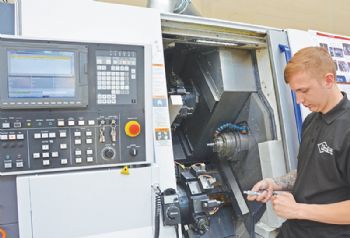
Despite a high degree of volatility from month to month, the overall value of the UK contract manufacturing market held steady in the third quarter of 2018, with a Contract Manufacturing Index (CMI) for the quarter of 223 — just 1.3% down on the previous quarter and 3.7% up on Q3 2017.
Since the Brexit vote in 2016, the CMI has risen by 18.6%.
Behind the headline figure of 233, there were major movements in the make-up of the market. Fabrication, which had been on the ascendant and represented 56% of the market in Q2, dropped by 27% and now represents just 43% of the market.
Machining, on the other hand, which had dropped to 35% of the total in Q2, rose by 23.4% and currently represents 44% of the market — appearing to signal a reversal of the trend in Q2 of companies bringing more machining back in-house.
Other areas, including contract electronics manufacturing, tool making and moulding, were up by 46% and now represent 13% of the total.
There was significant variation from month to month; July saw a high level of demand, which dropped off in August and started to recover in September.
The CMI is produced by ‘sourcing specialist’ Qimtek and reflects the total purchasing budget for out-sourced manufacturing of companies looking to place business in any given month.
This represents a sample of over 4,000 companies which could be placing business that together have a purchasing budget of more than £3 billion and a supplier base of over 7,000 companies with a verified turnover in excess
of £25 billion.
The baseline figure of 100 represents the value of the sub-contract market in 2014, when the CMI was launched.
Qimtek owner Karl Wigart said: “These are interesting figures, which show the overall market remaining healthy but vulnerable to shifts in demand and strategy.
“In general, the latest figures have followed a similar pattern to the CIPS Markit purchasing index.
“It is encouraging to see that the market has gone up by nearly a fifth since the Brexit vote, although the underlying reasons are hard to determine.
“It could be that business is generally more buoyant, or it could be down to a structural move, as OEMs position themselves to be more flexible by out-sourcing more of their production to avoid capital investment and taking on staff.”